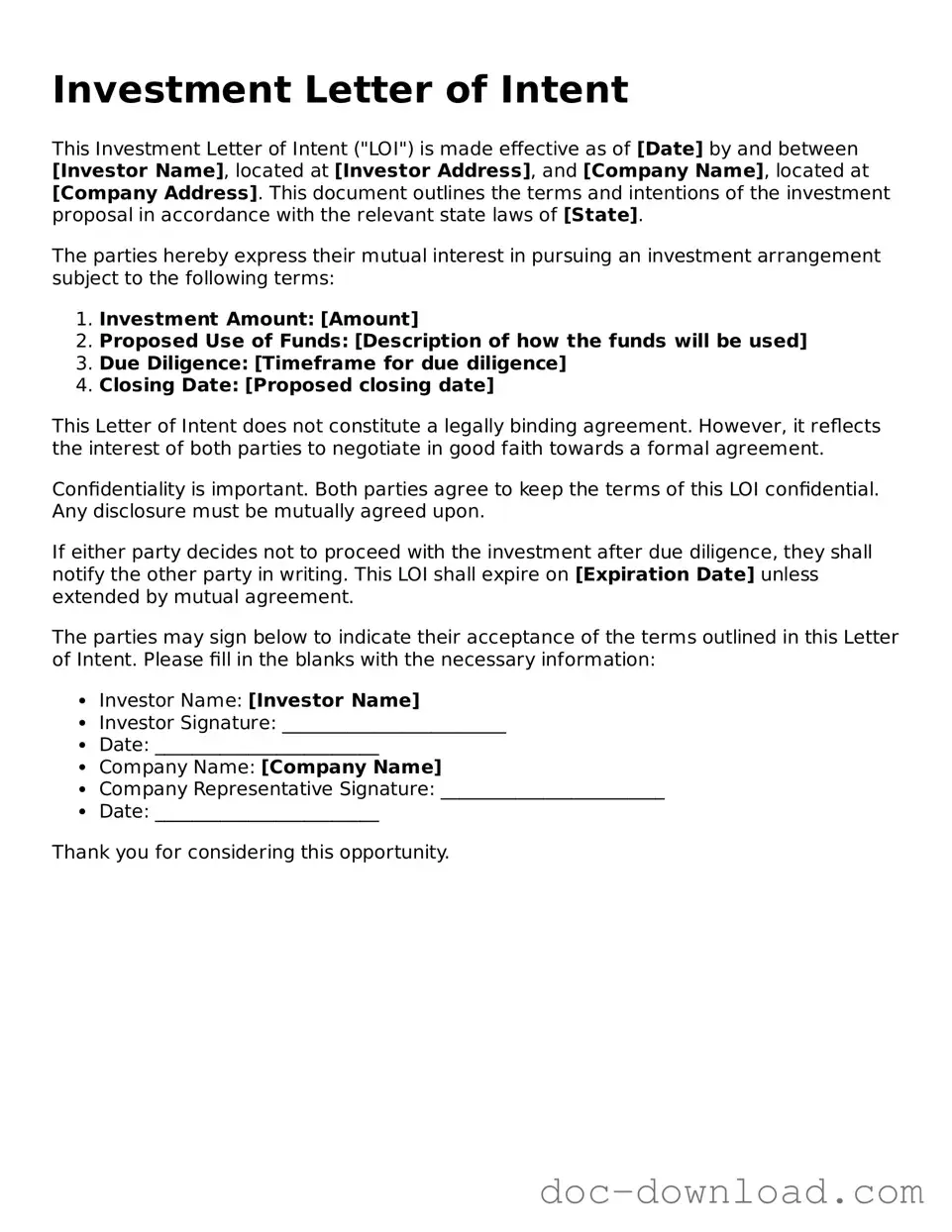The Investment Letter of Intent (LOI) shares similarities with a Memorandum of Understanding (MOU). Both documents serve as preliminary agreements outlining the intentions of parties involved in a transaction. An MOU, however, is typically less formal than an LOI and may not include specific terms of a deal. While an LOI often signifies a commitment to move forward, an MOU can serve as a framework for negotiation, detailing the general principles that will guide future agreements.
Another document akin to the Investment LOI is the Term Sheet. A Term Sheet outlines the basic terms and conditions of an investment or financing arrangement. Like the LOI, it provides a summary of key points but is generally more detailed regarding financial terms, valuation, and structure. Both documents are used to guide negotiations, but the Term Sheet often serves as a precursor to a more formal agreement, while the LOI can indicate a stronger intent to finalize the deal.
The Non-Binding Agreement is also comparable to the Investment LOI. This document establishes a mutual understanding between parties without creating enforceable obligations. While an LOI may contain binding provisions regarding confidentiality or exclusivity, a Non-Binding Agreement typically focuses on the intention to negotiate without committing to specific terms. Both documents aim to facilitate discussions and clarify the parties’ intentions, but the Non-Binding Agreement emphasizes a lack of enforceability.
In addition, the Letter of Intent for Real Estate Transactions bears resemblance to the Investment LOI. This document outlines the key terms and conditions for a potential real estate deal, such as purchase price and contingencies. Similar to the Investment LOI, it serves as a starting point for negotiations and expresses the parties' interest in moving forward. However, the real estate LOI often includes more specific details about property conditions and financing arrangements.
The Purchase Agreement is another document that shares characteristics with the Investment LOI. A Purchase Agreement is a formal contract that finalizes the sale of goods or services. While the Investment LOI expresses intent to invest, the Purchase Agreement solidifies the terms of that investment. Both documents reflect the parties' commitment to a transaction, but the Purchase Agreement is legally binding and includes comprehensive details about the transaction, including payment terms and obligations.
The Confidentiality Agreement, or Non-Disclosure Agreement (NDA), is also relevant when discussing the Investment LOI. This document protects sensitive information shared during negotiations. While the LOI may include confidentiality provisions, an NDA is specifically designed to safeguard proprietary information. Both documents are essential in maintaining trust between parties as they explore potential investments, but the NDA focuses solely on confidentiality rather than outlining the terms of the investment itself.
Lastly, the Joint Venture Agreement has similarities to the Investment LOI. This document formalizes the partnership between two or more parties to undertake a specific business venture. While the Investment LOI expresses interest in investing, the Joint Venture Agreement establishes the operational and financial structure of the partnership. Both documents reflect a commitment to collaboration, but the Joint Venture Agreement is more comprehensive, detailing responsibilities, profit-sharing, and management roles.
